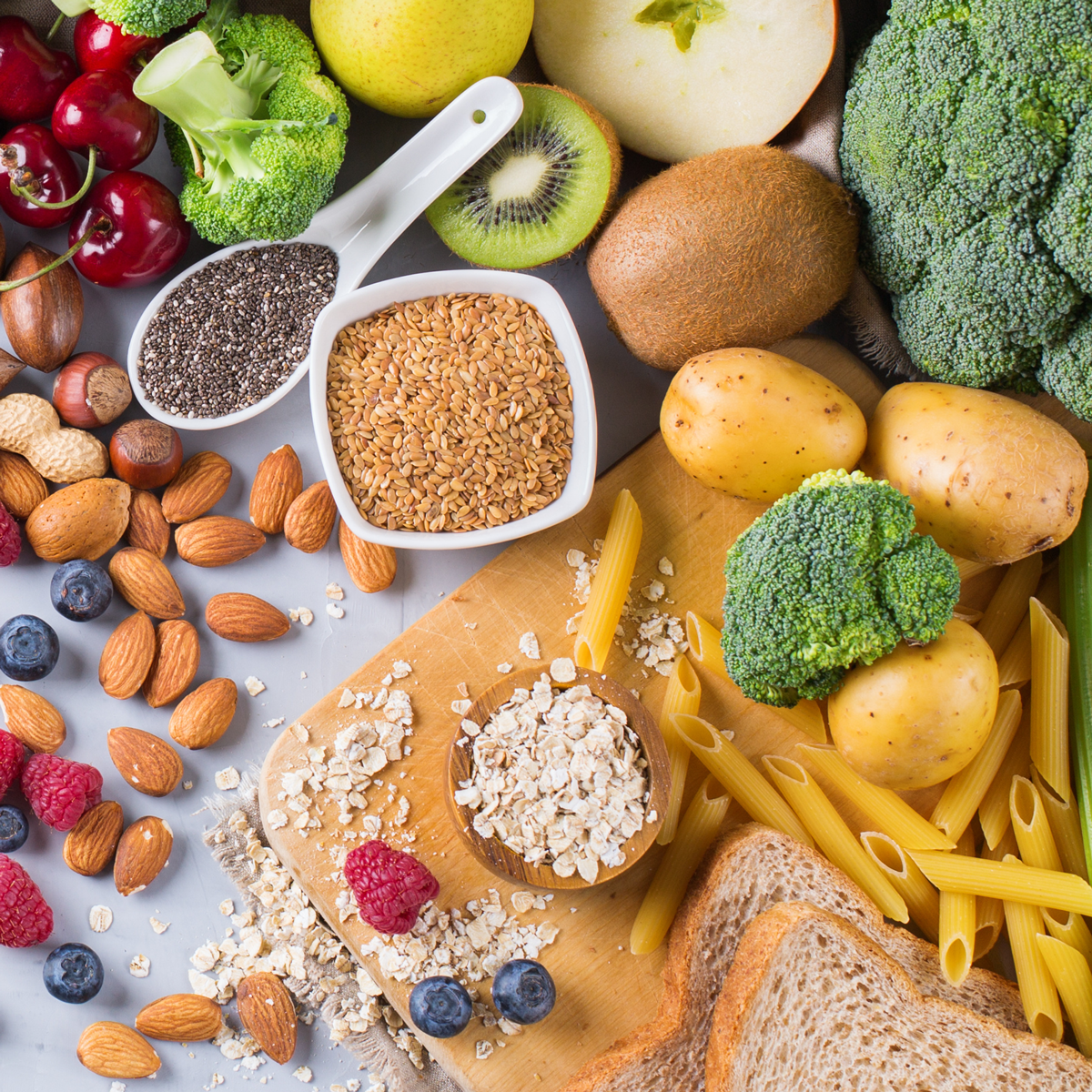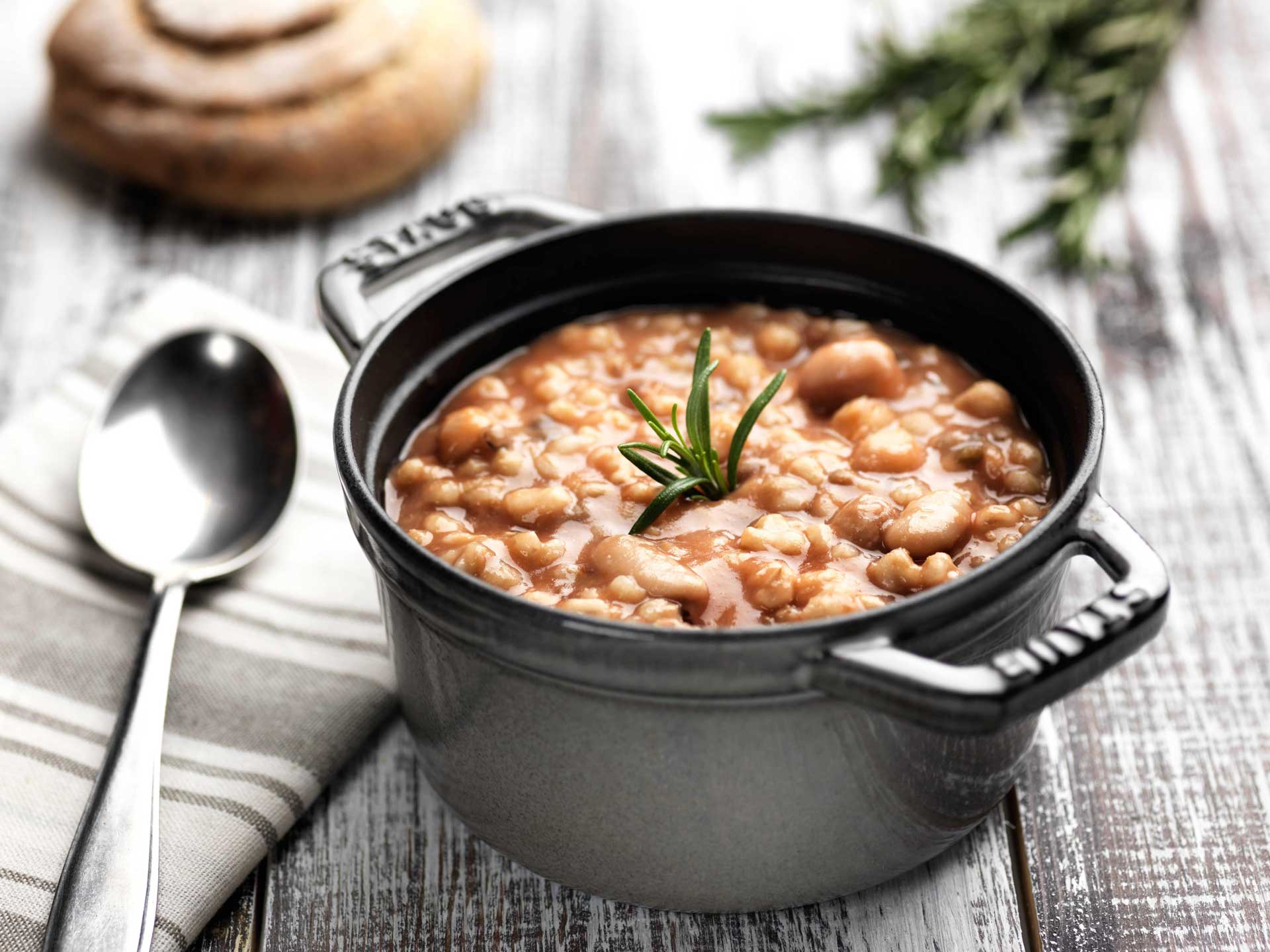
Dietary Fiber: How Much to Consume and in Which Foods to Find It
The intake of carbohydrates in the Mediterranean diet reaches 55-60% of total energy, and the proportion of simple carbohydrates (sugars) should be kept below 10-15%. This basic dietary rule becomes simpler to follow if one prefers the daily intake of foods with a high content of dietary fiber such as vegetables, fruits, legumes, and whole grains.
Dietary fiber is the necessary and beneficial "non-nutrient," whose ability to modulate chronic-degenerative diseases such as diabetes, dyslipidemia, obesity, and cancer has been well known for some years.
Fibers, of plant origin, are predominantly composed of polysaccharides (cellulose, lignin, pectin, mucilage) and are resistant to digestive processes; therefore, they are not considered a true energy substrate. In reality, fiber also has a small energy value, calculated at approximately 2 kcal/g (FAO/WHO document -1998).
Its main role is to regulate intestinal function by increasing fecal mass and promoting intestinal transit. Since it does not undergo digestion like other nutrients, it practically reaches the colon intact, where it is used by the bacterial flora (fermentation and formation of fatty acids beneficial to our body), which defends us from the attack of pathogenic bacteria responsible for some diseases. Indeed, the lack of fiber in the diet is correlated with a large number of diseases (tumors, obesity, diabetes).
Two types of fiber are distinguished: soluble fiber, especially found in fresh fruit and legumes, and insoluble fiber, derived from whole grains (bran).
Soluble fibers such as pectins, gums, β-glucans, and mucilages seem to reduce intestinal absorption of glucose and fats (in particular, β-glucans seem to have an effect on reducing plasma LDL cholesterol). The appropriate and daily consumption of soluble fiber, established at 5-10 g for adults, allows the intestine to be regulated together with the intake of a sufficient amount of water (1.5-2 liters/day). Another great advantage of consuming fiber in the daily diet is to increase the feeling of satiety; therefore, regular consumption of plant foods at meals and snacks is strongly recommended.
Unlimited vegetables (at least 2-3 servings per day), fruit (without exaggeration, since it is also a source of simple sugars), legumes at least 2-3 times a week.
The amount of fiber present, for example, in a serving of bean soup is as much as 12.5 g, which is more than a third of the amount recommended by LARN for an adult. If you add a serving of leafy green vegetables to this, you reach 20 g of fiber in a single dish. The feeling of satiety is ensured!
| Nutritional values per 100 gr |
Cooked cannellini beans |
Cooked cannellini beans 1 serving = 240 gr |
|
Energy |
289kj - 69kcal |
165 kcal |
|
Fat |
0,4g |
0,96g |
|
Carbohydrates |
9,2g |
22g |
|
Fiber |
5,2g |
12,5g |
|
Protein |
4,5g |
10,8g |
On the other hand, you may experience an annoying feeling of bloating and flatulence, not tolerated by everyone. In this case, preparing pureed legumes such as a cream soup might be more digestible.
Cellulose, hemicellulose, and lignin represent the insoluble fiber present in whole grain bran. The amount of fiber present in whole wheat pasta (see table) is almost triple that of non-whole wheat (see table below).
|
Nutritional values per 100g |
Organic whole wheat semolina |
Organic semolina |
|
Energy
|
1543kj - 364kcal |
1501kj - 354kcal |
|
Fat |
1,6 g of which saturates 0,5g |
1,3 g of which saturates 0,3g |
|
Carbohydrates |
72 g of which sugars 2,5g |
73,2 g of which sugars 3,2g |
|
Fiber |
8 g |
2,7 g
|
|
Protein |
11,5g |
11g |
Insoluble fibers are less fermentable; they contribute to increasing fecal mass, which stimulates intestinal motility physiologically, thus promoting evacuation. But beware: large amounts of fiber without adequate amounts of water can cause the opposite effect, namely constipation. Therefore, fiber should always be associated with constant and sufficient hydration.
Barley, oats, rye, brown rice, cereals naturally rich in fiber, should be included daily in our diet.
However, excessive consumption of whole products (bread, pasta, baked goods) can interfere with the absorption of calcium, iron, phosphorus, and zinc due to the presence of a substance such as phytic acid. Once defined as an anti-nutrient fundamentally harmful until a few years ago, currently, some studies have also shown beneficial and protective effects against some types of cancer, cardiovascular diseases, and Alzheimer's disease.
In conclusion, here are the simple rules I recommend putting into practice at the table:
- consume 2-3 servings of fresh fruit per day
- consume legumes 2-3 times a week, either alone or combined with pasta or rice (whole, only if tolerated)
- vary among all cereals
- unlimited vegetables, both for lunch and dinner (in a healthy individual, with regular bowel movements), cooked or raw, as a side dish or incorporated into first courses
- chew slowly and thoroughly to finely shred the fibers (to avoid the formation of intestinal gas and any colic)
- 1.5 liters of water per day; in the summer season, exceed 2 liters






